52 Weeks of Fantastic Bindings, Week 29: Conservators at work
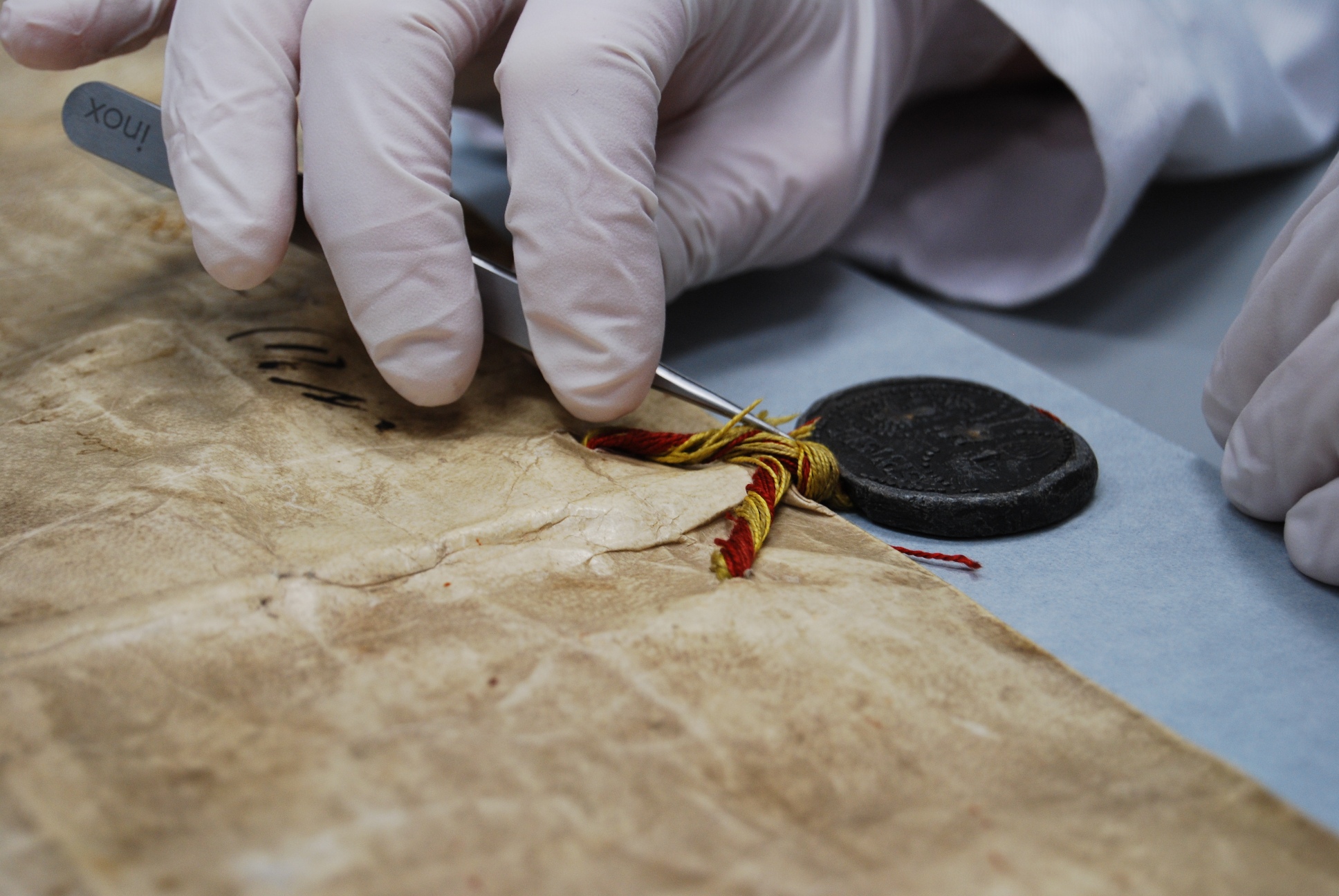
What better way to bring in the New Year than dedicating our last binding post of 2011 to those who take our old stuff and make it new(ish) again: conservators!
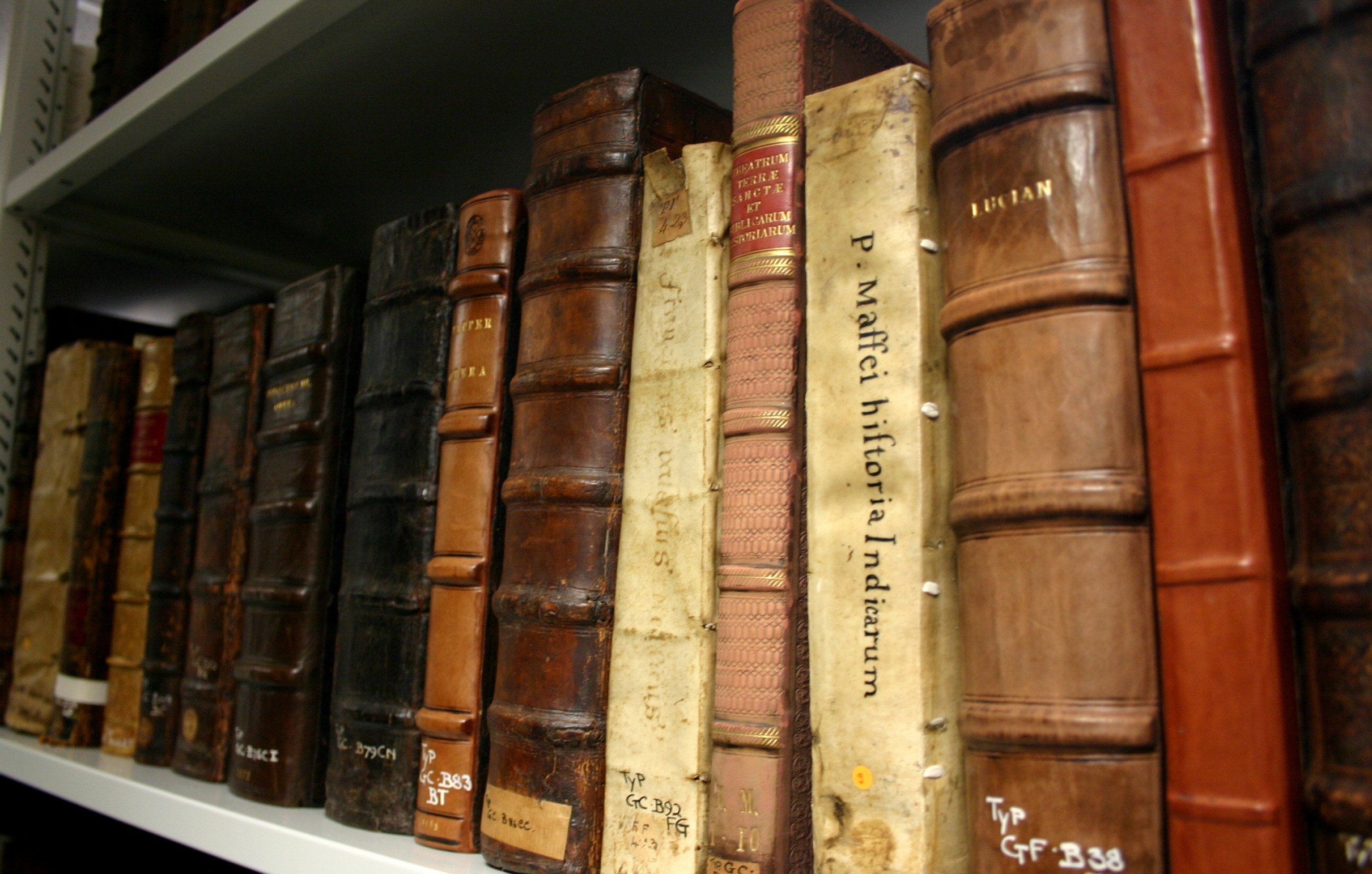
Like many historic collections, one can spend almost as much time identifying eras in binding trends as you can eras in book conservation trends in the Special Collections at St Andrews. Many of our early books suffer from hundreds of years of use from students, scholars, researchers and educators, which we are very happy with because that is what the collections are here for: use. However, in order to keep these books and manuscripts from falling apart, they occasionally need to be tidied up and made more sturdy for future use.
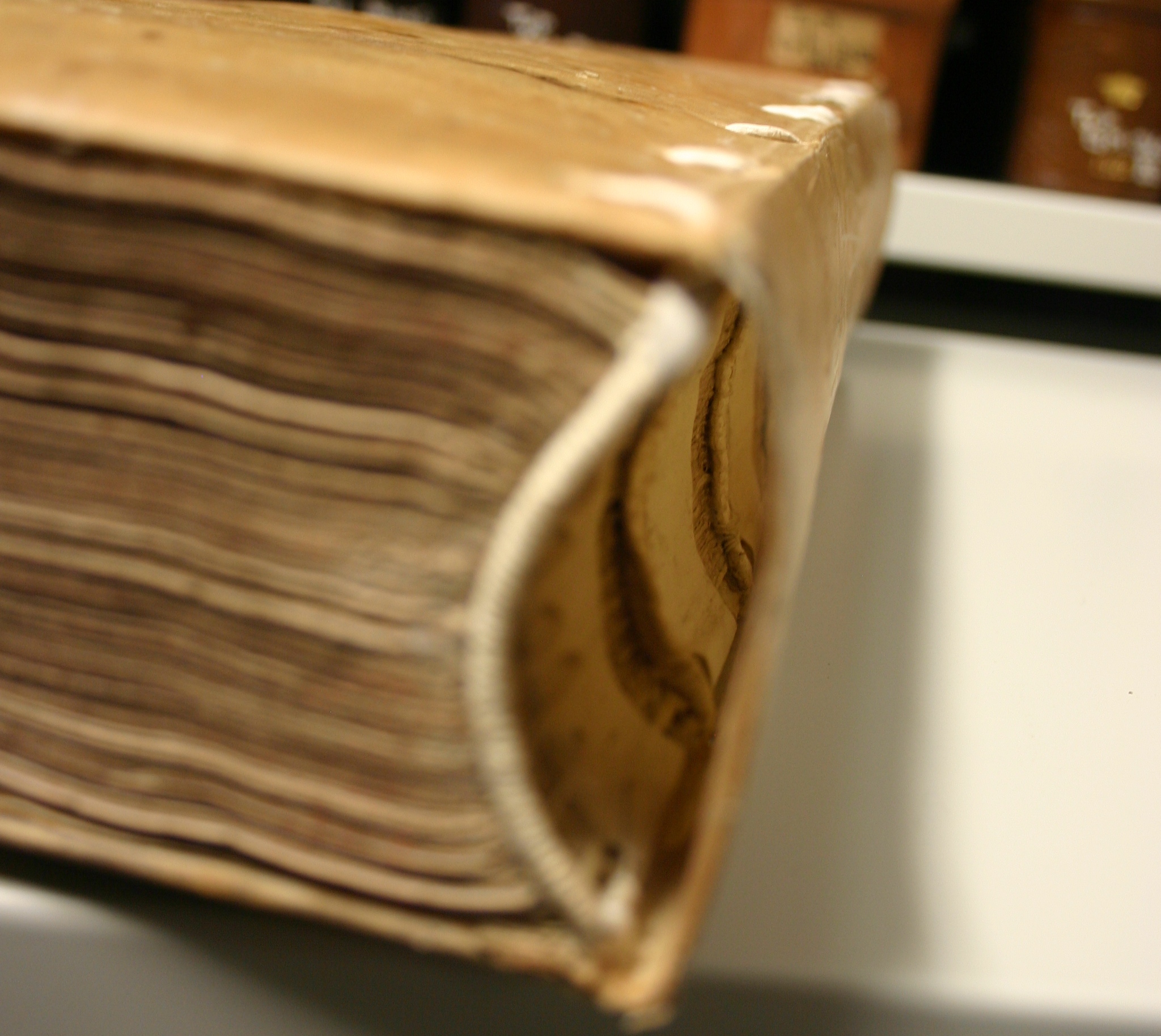
It’s quite easy to identify an 18th or 19th century rebind or repair when working closely with the collections, often these books were rebound in a manner that imitates the original binding, or if the book is simply rebacked or repaired the material used is often stained a similar colour so that the repair is “seamless”. At first glance this is a nice gesture, but in reality it is anachronistic and can often cause confusion to readers who aren’t familiar with binding or conservation trends.
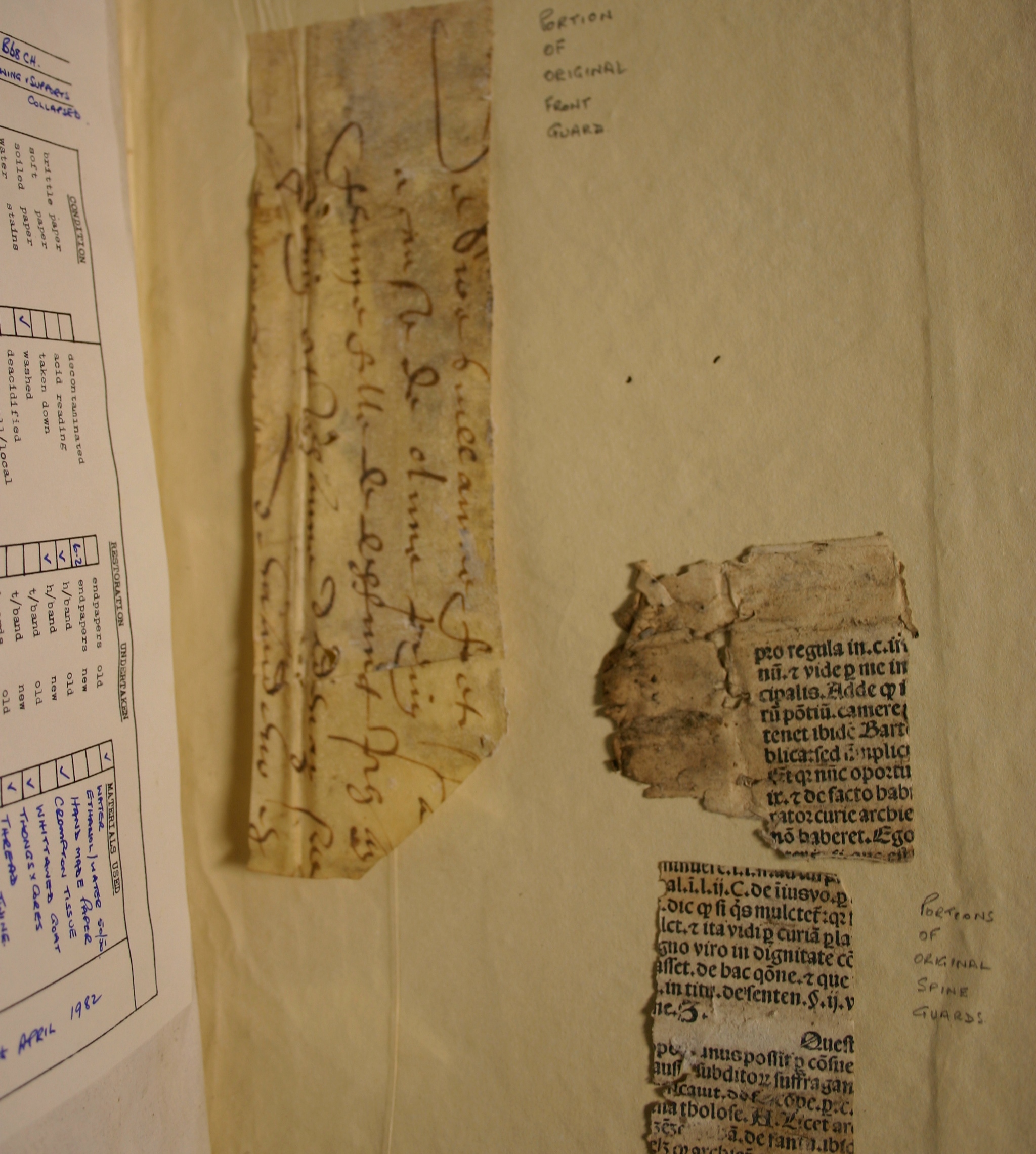
Thankfully, 20th century practices have developed both in techniques and materials used, and there are some wonderful examples of 20th and 21st century conservation in our collections. I am of the opinion that the best book conservation work should mimic the ethos of historic buildings restoration: if you have to introduce new material (binding, sewing, fly-leaves, &c.), use sturdy and durable stuff that contrasts nicely with the original item, i.e. when someone glances at the book being restored they can quickly identify what is original and what is not. In cataloguing, we here at St Andrews aim to describe the binding of a book in full and concise detail, part of this being the recording of any conservation work along with who did the work and when.
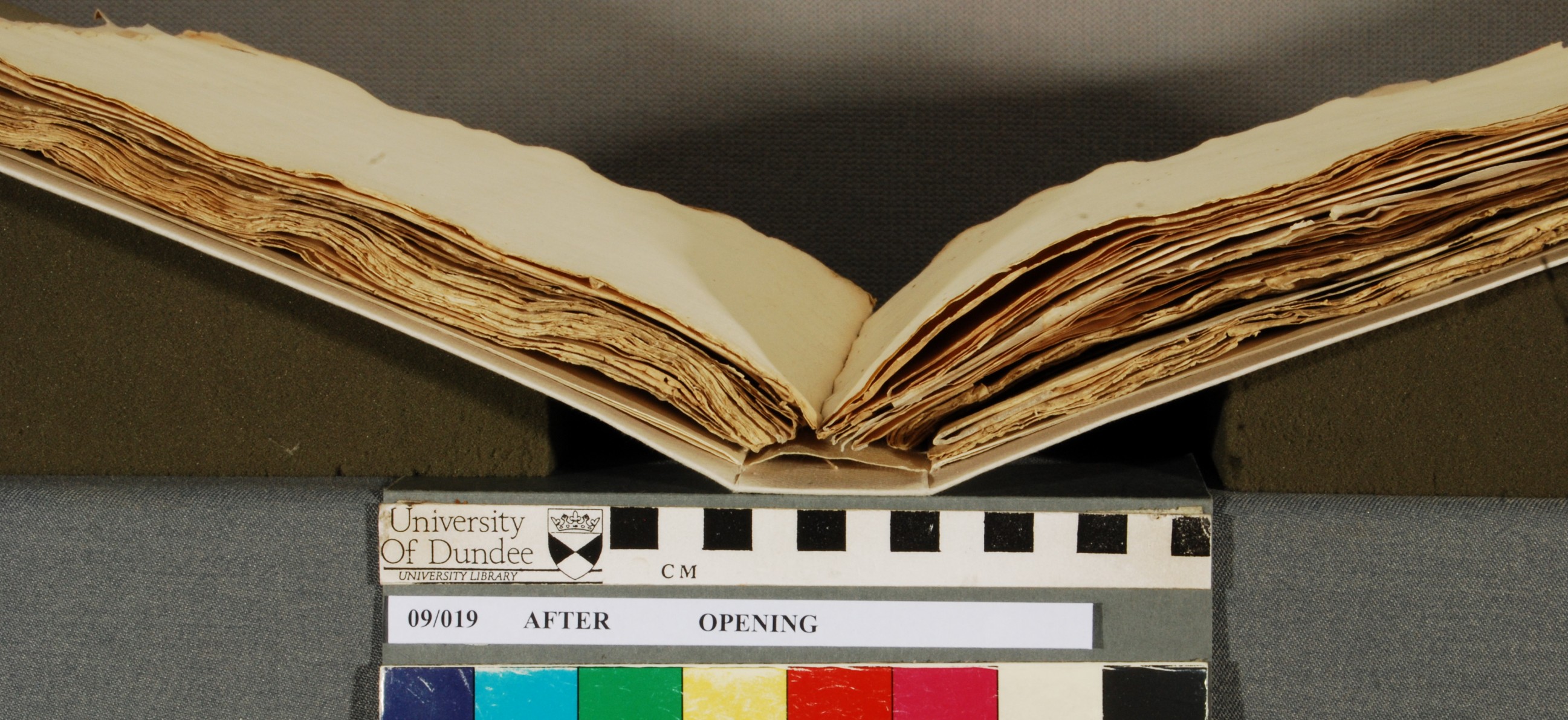
Unfortunately, due to the nature of the precise and time-consuming work and the materials needed, book conservation is quite pricey and often inaccessible in some geographic areas. Many institutions have conservation labs on-site, although this number is dwindling annually due to budget cuts and reallocation of funds. So, if you know someone who works in conservation of any type, give them a hug this New Year and thank them for keeping our cultural heritage accessible and beautiful!
Happy New Year!
–DG
I am especially interested in the work you are doing here on the Papal Bull of the charter of Bishop Henry Wardlaw. I have written three books on the history of the Wardlaws history back in Scotland and he features primarily in all three. They are "Ancestral Earth", in 3 volumes. See more on that at: www.ladath.com the link of 'Wardlaw Books'. Do you have an image of the finished original charter that you could send to me? I would really appreciate that. My books are in the Library at St Andrews and also in the new museum by the castle. Thank you for doing this! Diane Wardlaw [email protected]
Hello, I will put our Muniments Archivist, Rachel Hart, in touch with you to discuss this further. Thank you for reading our blog!